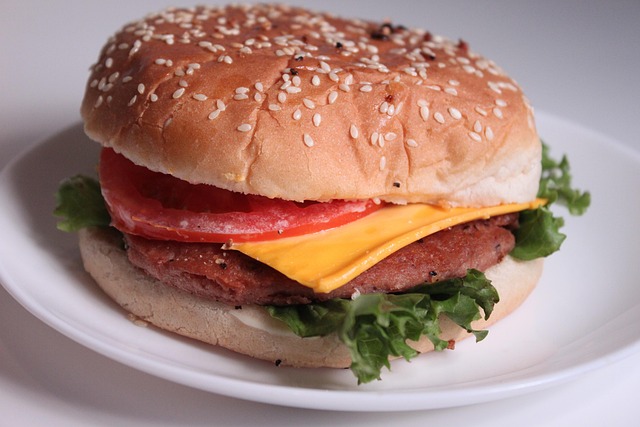Non-surgical fat reduction procedures like CoolSculpting and liposuction offer alternative ways to eliminate stubborn fat without incisions. CoolSculpting uses cryolipolysis (cold therapy) to freeze and destroy fat cells, while liposuction suctions them out. When choosing, consider treatment duration, comfort, side effects, and long-term results. CoolSculpting is less invasive with minimal downtime, making it a preferred choice for specific area targeting; liposuction provides immediate, extensive fat reduction but may not be suitable for all areas or patients due to invasiveness. Safety and effectiveness vary, so consulting a qualified provider is crucial. The ideal method depends on individual goals and comfort levels.
“Considering non-surgical fat reduction procedures? Explore a head-to-head comparison between CoolSculpting and liposuction, two popular choices for targeted fat loss. This comprehensive guide delves into their mechanisms, safety profiles, outcomes, and recovery processes.
From understanding the basics of each procedure to analyzing side effects and choosing the right fit, this article arms you with insights to make an informed decision regarding your body contouring journey. Discover which method aligns best with your needs and goals through this detailed non-surgical fat reduction comparison.”
Understanding Non-Surgical Fat Reduction Procedures

Non-surgical fat reduction procedures have gained significant popularity as alternative solutions to traditional liposuction for those seeking to eliminate stubborn fat deposits. These non-invasive treatments offer a promising approach to slimming and contouring various parts of the body, including the abdomen, flanks, thighs, and chin. CoolSculpting and liposuction are two prominent players in this field, each with its unique advantages.
A key aspect of understanding these procedures is recognizing that they differ from surgical options. CoolSculpting, for instance, utilizes cold therapy to freeze and eliminate fat cells, while liposuction involves suction to vacuum out excess fat. This non-surgical approach to fat reduction benefits patients seeking minimal recovery time, no incisions, and a relatively quick return to daily activities. The comparison between CoolSculpting and liposuction becomes more focused when considering factors like treatment duration, patient comfort, potential side effects, and long-term results, all of which play a crucial role in making an informed decision.
CoolSculpting: A Cold-Based Approach to Fat Loss

CoolSculpting represents a groundbreaking non-surgical fat reduction approach, utilizing cryolipolysis—a cold-based technology. This method involves targeted cooling of fat cells to temperatures below zero, effectively freezing and destroying them. Over time, the body processes these destroyed cells, leading to reduced fat in the treated area. CoolSculpting offers several advantages as a non-invasive procedure, including minimal downtime, no incisions, and little to no recovery period compared to surgical alternatives like liposuction.
Unlike liposuction, which physically extracts fat through suction, CoolSculpting prompts the body’s natural process of eliminating unwanted cells. This makes it an attractive option for those seeking a more gentle, minimally invasive way to sculpt their physique without surgery. The procedure is typically well-tolerated, with most patients experiencing little discomfort, making it a popular choice in the non-surgical fat reduction comparison.
Liposuction: Traditional Surgical Fat Removal

Liposuction, a traditional surgical procedure, has long been a go-to for those seeking non-surgical fat reduction. This method involves making small incisions in the targeted area and using a suction device to remove excess fat cells. It’s often considered a quick fix for specific problem areas, such as the abdomen, thighs, or arms. However, it comes with risks like any surgery, including potential scarring, bleeding, and anesthesia-related complications.
Compared to emerging alternatives like CoolSculpting, liposuction may leave patients with longer recovery times and a higher chance of future fat regrowth due to the body’s natural healing processes. It’s crucial to note that while liposuction can deliver significant results, it might not be suitable for everyone, especially those with larger areas of excess fat or those seeking more subtle improvements.
Safety and Side Effects Comparison

When comparing CoolSculpting and liposuction for non-surgical fat reduction, safety stands out as a key consideration. Both procedures aim to eliminate targeted fat cells, but they do so in distinct ways. CoolSculpting uses cryolipolysis, freezing fat cells with cold temperatures, while liposuction involves suction to physically remove fat. In terms of safety, CoolSculpting is generally considered less invasive and has fewer side effects. Common temporary reactions like numbness, swelling, and bruising are more prevalent with liposuction. Additionally, although rare, potential risks for both include tissue damage, infection, and asymmetry.
The non-surgical nature of CoolSculpting makes it appealing to those seeking a safer alternative to liposuction’s incisions and general anaesthesia. However, individuals should be aware that side effects can vary. Consulting with a qualified provider is essential to understand the potential outcomes and ensure the chosen method aligns with individual needs and medical history for optimal safety during non-surgical fat reduction procedures.
Results and Recovery Analysis

When comparing CoolSculpting and Liposuction for non-surgical fat reduction, understanding the results and recovery is key. CoolSculpting, a groundbreaking technology, offers impressive outcomes by freezing and eliminating targeted fat cells. This procedure is ideal for those seeking gradual results as it stimulates collagen production, leading to skin tightening over time. Recovery is generally swift, with minimal downtime, allowing patients to resume normal activities within days.
On the other hand, Liposuction provides more immediate and dramatic results as it physically removes fat through suction. While effective for significant weight reduction, it may not be ideal for fine-tuning specific areas due to its invasive nature. Post-procedure recovery involves some discomfort and swelling, typically resolving within a few weeks. The choice between these methods depends on individual preferences, desired outcomes, and the level of invasiveness one is comfortable with in a non-surgical fat reduction procedure.
Choosing Between CoolSculpting and Liposuction

When considering non-surgical fat reduction options, CoolSculpting and liposuction are two popular choices that offer distinct advantages. The decision between the two largely depends on individual goals, lifestyle, and recovery expectations. CoolSculpting, a groundbreaking technology, uses controlled cooling to freeze and eliminate targeted fat cells without any incisions or downtime. It’s particularly effective for those looking to reduce stubborn fat in specific areas like love handles, belly, and thighs. On the other hand, liposuction involves suctioning fat from problem areas using a small cannula, making it ideal for more extensive fat reduction or achieving contoured results. Liposuction may be preferable for patients seeking dramatic body shaping or those with larger fat deposits. Both procedures have their merits, and understanding these differences can help patients make an informed choice aligned with their aesthetic desires and lifestyle considerations.
